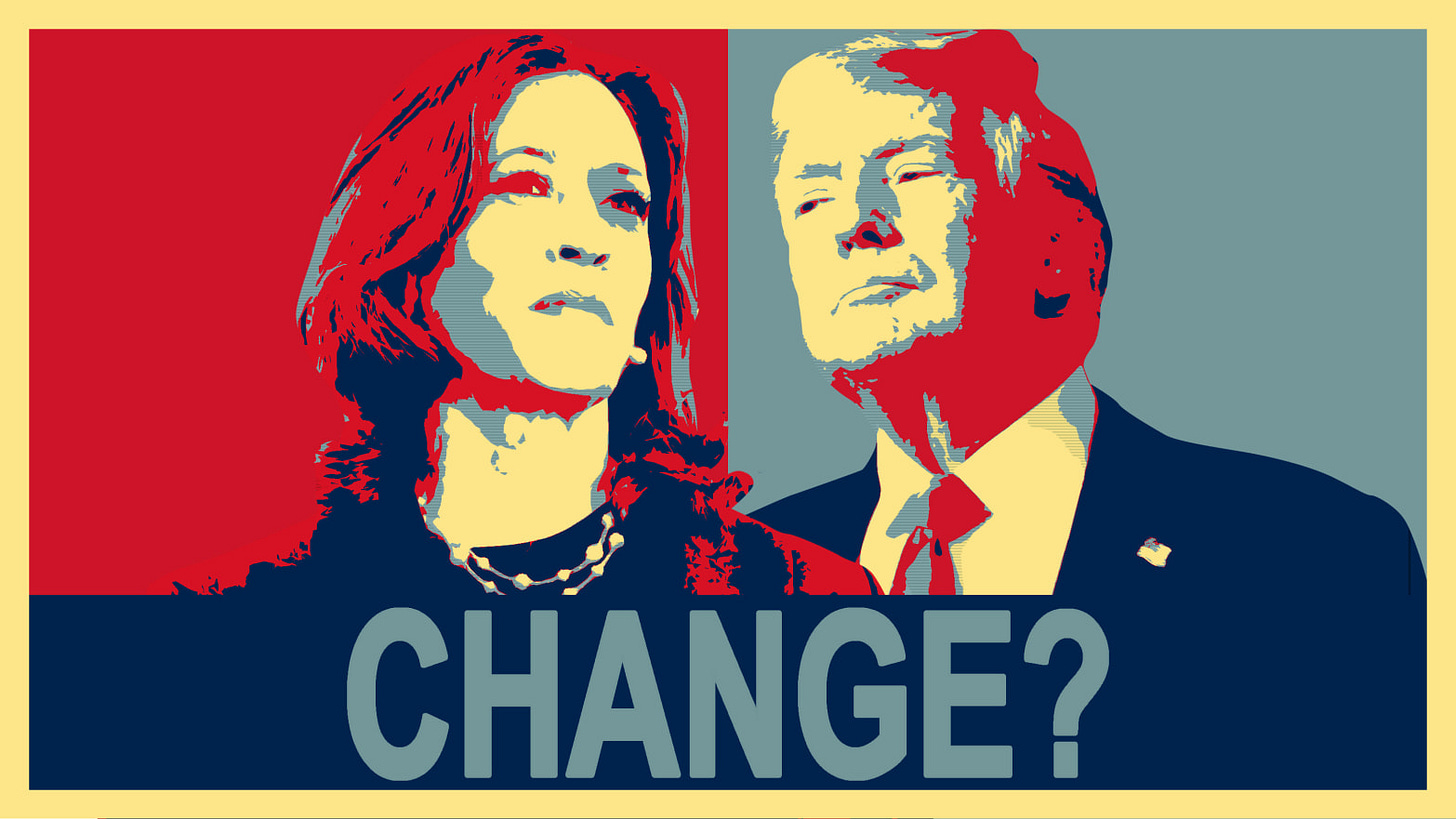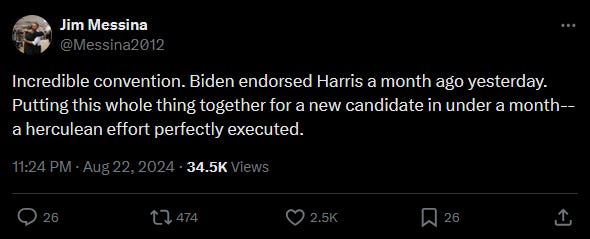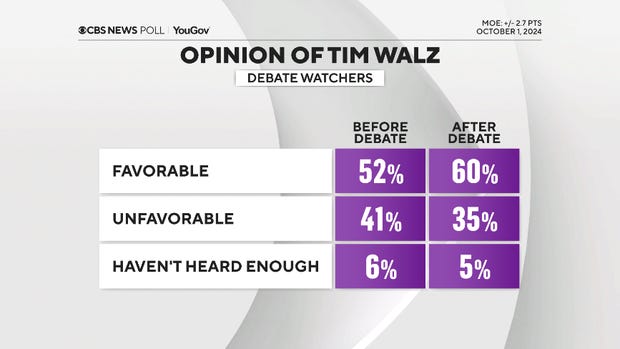A Tale of Two Parties & Their Futures
Who's going to lead the charge in the not-so-distant future?

Within the past few years, the question of who would lead the next generation of both the Democratic and Republican Parties became increasingly glaring. In fact, it wasn’t too long ago that it was quite difficult to imagine either party without both Joe Biden and Donald Trump at the helm, even if they were both extremely unpopular.
This fog of uncertainty seemed to have clouded the minds of everyone: from the average American that gathers news in bits and pieces, to the most immersed political junkies. Given what happened during what was a tumultuous summer and a fierce couple of debates, however, it seems that the fog has a break in it— a glimpse of light that points towards the future.
So, what exactly is the light shining on? What is it showing us about the futures of our two major political parties?
The “Bridge” Candidate
Let’s start where the cracks first began to show: the first presidential debate between President Joe Biden and Donald Trump.
After what might be considered one of the most consequential debates in American history, Biden eventually caved into the mounting pressure of calls for him to drop his bid for a second term in the Oval Office. But he wasn’t necessarily even supposed to be running again.1 More specifically, he had previously referred to himself as a transitional candidate at a Michigan rally in 2020, stating:
“Look, I view myself as a bridge, not as anything else. There’s an entire generation of leaders you saw stand behind me. They are the future of this country.”
This remark resurfaced shortly before Biden announced his departure from the campaign trail, but it still left a large question unanswered: who would replace him?
His Vice President, Kamala Harris, wasn’t exactly the clear choice— after all, she was polling at around a 36% favorability rating at the time. Moreover, there were talks of having a second open primary process to select the next candidate as a way to put concerns about party elites overriding the will of the voters to rest.2
So, at least for a short while, it was considered fairly touch and go whether Harris would end up being Biden’s replacement or not, regardless of the fact that he had endorsed her. Harris’ ability to clinch the nomination even came as a surprise to some of the most veteran political actors. As Jim Messina, the former Deputy Chief of Staff for Operations under President Obama, put it:
Putting the uncertainty of Harris’ nomination and general electability aside, however, Biden’s choice to step down was the first domino that led to voters seeing a whole slate of quality candidates for the future. Had he decided to stay in the race, most voters would not have had the opportunity to hear from the likes of Pennsylvania Governor Josh Shapiro; Kentucky Governor Andy Beshear; and even Minnesota Governor Tim Walz, who was a dark horse during Harris’ VP selection process before eventually being picked. At this point in the race, Walz is boasting favorability ratings as high as 60%, which is unprecedented in a political climate where the favorability of candidates is typically underwater.
Something similar can be said for Harris, who is sitting at a comfortable 3.5-point lead ahead of Trump in the polls (49.4% to 45.9%), per the Silver Bulletin.
From this, it can be argued that Biden fulfilling his role as the “bridge” candidate was invaluable to the future of the Democratic Party, because if he was still in the race today, it’s likely that both: 1) Harris’ favorability would’ve remained quite low; and 2) that the other figureheads of the party would’ve remained hidden from the general public.
But the Democrats weren’t the only ones facing a power vacuum.
Keeping the MAGA Momentum
Donald Trump selected his runningmate, J.D. Vance, largely in part because of the fact that he would represent the future of the Republican Party. Despite being designated at the heir apparent to the MAGA movement, however, the best-selling author of “Hillbilly Elegy” wasn’t well-received on the national stage— at least not until the vice presidential debate that took place earlier this week.
Prior to the debate, Vance was polling quite poorly among the electorate, initially being at roughly 25% aggregate favorability when he made his debut, to just under 35% today. That being said, he is beginning to show signs of life since the debate. David Wright, a writer and editor for CNN, shared an internal poll that put Vance in a much better position, albeit still a bit in the negative overall:
What this signifies isn’t necessarily that Vance is still unpopular, but rather that the Trump campaign’s decision to bring him on board still has a solid chance to pay off in the long run in terms of solidifying the MAGA movement in a post-Trump era. It provided the perfect opportunity for Vance to share his background, and present Trumpism in a much more eloquent and palatable fashion.
But it’s not as though the Republicans are in the clear just yet.
Unlike the vast sea of Democratic leadership that emerged in the wake of Biden’s withdrawal, there isn’t that much of a selection among Republicans aside from Vance. Sure, there are candidates like Florida Governor Ron DeSantis and former Governor of South Carolina, Nikki Haley, but they either lack the necessary charisma to motivate the MAGA base (such as in DeSantis’ case), or are more moderate than they would like (such as in Haley’s case). What’s more is that the die-hard Trump loyalists, such as Kari Lake and Mark Robinson, tend to perform extremely poorly in general elections where both moderates and independents are turned off by their extremism. For example, 33 Trump-endorsed candidates lost in the 2022 midterms, with 32 of them openly sharing that they believed the 2020 election was stolen.
Given this drought of potential candidates that can carry on the full spirit of the MAGA movement, it continues to be somewhat difficult to imagine a Republican Party that can move forward without Trump at the forefront. Regardless, it’s still fair to say that both the Democrats and Repbulicans have improved (at least somewhat) in terms of showing Americans what’s in store for the leadership of their parties.
This rhetoric was short-lived; Biden repeatedly hinted that he would run for another term after winning in 2020.
The last time something similar happened was in the election of 1968, in which the Democratic incumbent, Lyndon B. Johnson, withdrew from the race in March of that year. This led the “party bosses” (i.e., the “elites”) nominating his vice president, Hubert Humphrey, leaving the voters dissatisfied as they didn’t have much of a say in the process. Humphrey was ultimately defeated by the Republican nominee, Richard Nixon.





